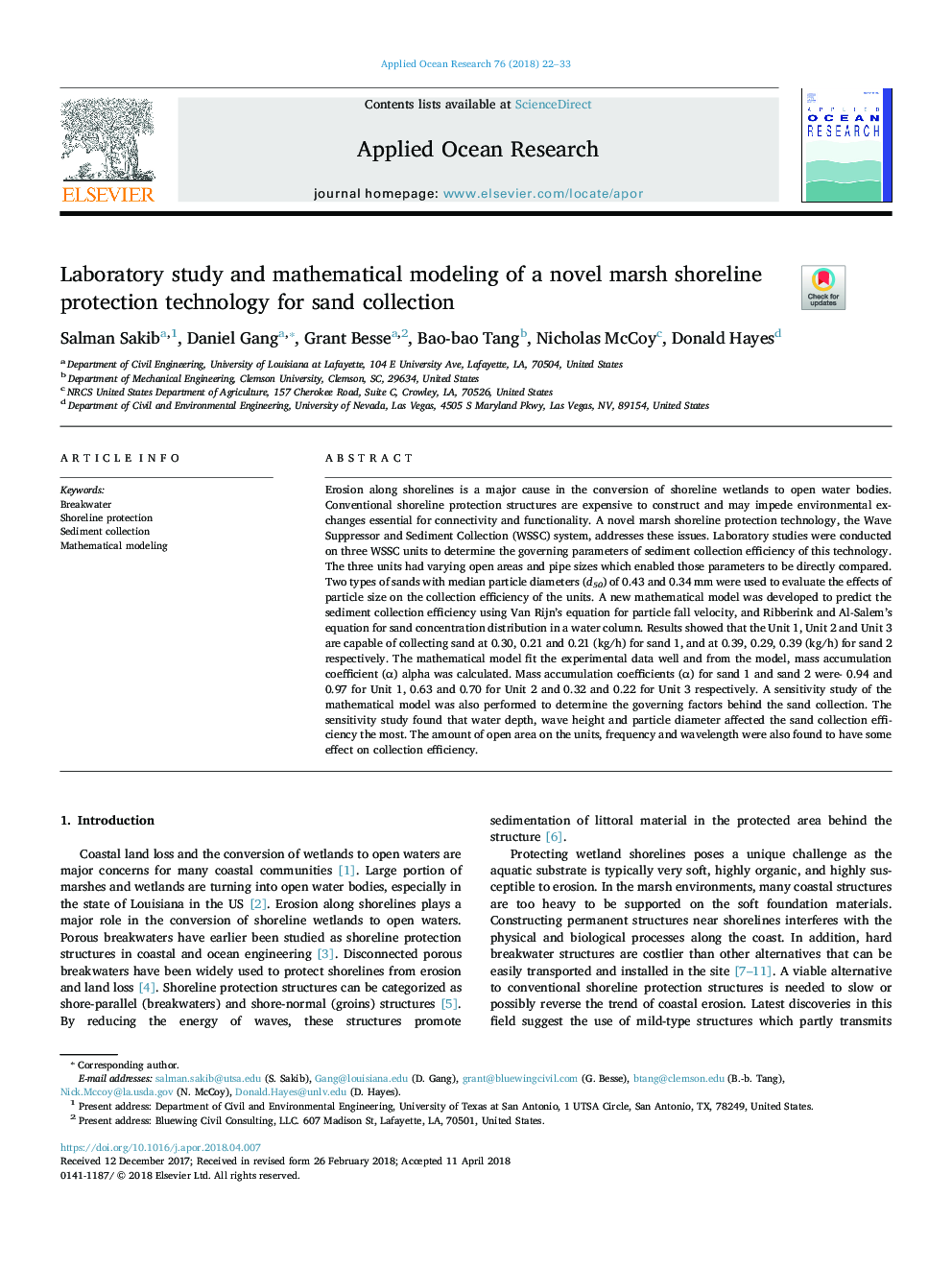| کد مقاله | کد نشریه | سال انتشار | مقاله انگلیسی | نسخه تمام متن |
|---|---|---|---|---|
| 8059238 | 1520227 | 2018 | 12 صفحه PDF | دانلود رایگان |
عنوان انگلیسی مقاله ISI
Laboratory study and mathematical modeling of a novel marsh shoreline protection technology for sand collection
ترجمه فارسی عنوان
مطالعه آزمایشگاهی و مدلسازی ریاضی تکنولوژی حفاظت از شن و ماسه جدید ماسه برای جمع آوری شن و ماسه
دانلود مقاله + سفارش ترجمه
دانلود مقاله ISI انگلیسی
رایگان برای ایرانیان
کلمات کلیدی
شکستن آب حفاظت از ساحل، جمع آوری رسوب، مدل سازی ریاضی،
موضوعات مرتبط
مهندسی و علوم پایه
سایر رشته های مهندسی
مهندسی دریا (اقیانوس)
چکیده انگلیسی
Erosion along shorelines is a major cause in the conversion of shoreline wetlands to open water bodies. Conventional shoreline protection structures are expensive to construct and may impede environmental exchanges essential for connectivity and functionality. A novel marsh shoreline protection technology, the Wave Suppressor and Sediment Collection (WSSC) system, addresses these issues. Laboratory studies were conducted on three WSSC units to determine the governing parameters of sediment collection efficiency of this technology. The three units had varying open areas and pipe sizes which enabled those parameters to be directly compared. Two types of sands with median particle diameters (d50) of 0.43 and 0.34â¯mm were used to evaluate the effects of particle size on the collection efficiency of the units. A new mathematical model was developed to predict the sediment collection efficiency using Van Rijn's equation for particle fall velocity, and Ribberink and Al-Salem's equation for sand concentration distribution in a water column. Results showed that the Unit 1, Unit 2 and Unit 3 are capable of collecting sand at 0.30, 0.21 and 0.21 (kg/h) for sand 1, and at 0.39, 0.29, 0.39 (kg/h) for sand 2 respectively. The mathematical model fit the experimental data well and from the model, mass accumulation coefficient (α) alpha was calculated. Mass accumulation coefficients (α) for sand 1 and sand 2 were- 0.94 and 0.97 for Unit 1, 0.63 and 0.70 for Unit 2 and 0.32 and 0.22 for Unit 3 respectively. A sensitivity study of the mathematical model was also performed to determine the governing factors behind the sand collection. The sensitivity study found that water depth, wave height and particle diameter affected the sand collection efficiency the most. The amount of open area on the units, frequency and wavelength were also found to have some effect on collection efficiency.
ناشر
Database: Elsevier - ScienceDirect (ساینس دایرکت)
Journal: Applied Ocean Research - Volume 76, July 2018, Pages 22-33
Journal: Applied Ocean Research - Volume 76, July 2018, Pages 22-33
نویسندگان
Salman Sakib, Daniel Gang, Grant Besse, Bao-bao Tang, Nicholas McCoy, Donald Hayes,
